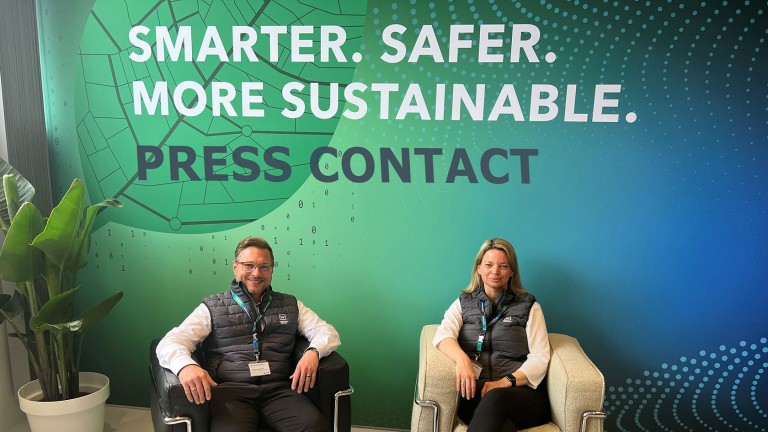Wirtgen WR 250 with integrated "S-Pack" spreader module
In its recycling and soil stabilization product division, Wirtgen provides an unrivaled range of mobile machines and systems for a whole variety of applications. The "S-Pack" (spreader pack) allows binding agent to be spread without generating clouds of dust; this addition to the construction machinery manufacturer's product range creates new opportunities for optimizing the range of applications and cost-efficiency.
Used on motorways, in residential areas, on industrial estates and on difficult terrain – recyclers and soil stabilizers are confronted with an extremely varied range of situations. In many cases, contractors face additional challenges due to strict emission standards, for instance in nature conservation areas. A solution is now available for these applications too, namely the "S-Pack" for the WR 240/WR 240i/WR 250 models from Wirtgen.
Using the integrated spreader module, a WR with "S-Pack" spreads the binding agent directly in front of the milling and mixing rotor which immediately mixes it into the soil. The closed drum housing and an additional double curtain of rubber matting prevents the formation of dust clouds and ensures that the material is exclusively spread inside the milled cut. Thanks to the integrated spreader module, binding agent can now be spread regardless of wind and weather and without drifting or displacement due to vehicles driving ahead or passing by. Materials such as cement or lime must be spread safely and precisely and processed without emissions. This is particularly true in sensitive areas such as industrial estates that are subject to restrictions on account of food production facilities or areas near airports. This applies especially to motorways, where drifting must be avoided in order to avoid endangering the flow of traffic.
Wirtgen's most powerful WR models, the WR 240/WR 240i and WR 250, are predominantly used on rough ground and soils with insufficient bearing capacity. Wherever other machines come up against their limits, the two recyclers and soil stabilizers bring their tremendous off-road mobility into play, and they now can also be used in combination with the integrated spreader module. As a result, jobs can be completed rapidly, utilizing a minimum of machinery and personnel and hence minimizing transport costs, too.
Spreading is optimized by a number of sophisticated technical features. Metering cells ensure that the binding agent is applied in precisely metered volumetric quantities, and equally precise, continuous control of the spreading quantity is assured by microprocessor-controlled processes. A two-part transverse auger is continuously supplied with binding agent by a conveyor unit and ensures that the material is uniformly applied over the complete working width of 2.40 m. In addition, the maximum spreading width can be incrementally adjusted to 1.60 m and 80 cm by individually switching the 80-cm-wide flaps in or out. Depending on the application concerned, the spreader can deliver between 1.5 and 40 kg/m².
The level in the binding agent tank (which has a maximum gross capacity of 5.5 m³) is monitored at various points by extremely sensitive sensors and precisely indicated on the control display at all times. The spreading quantity is simultaneously calibrated via the display when the bulk density of the binding agent is entered.
In addition, ten exhaust air filters with automatic self-cleaning function not only ensure effective purification of the exhaust air through the high air flow rate, but also allow the binding agent tank to be filled completely in less than five minutes thanks to the readily accessible filler port.
Operation of the integrated spreading system and diagnosis of the work process are extremely simple intuitive actions effected via the control display in the driver's cabin. The machine operator is in control of the mixing process at all times and can adapt the metered quantity to the current situation.

Public Relations
Reinhard-Wirtgen-Straße 2
53578 Windhagen
Germany